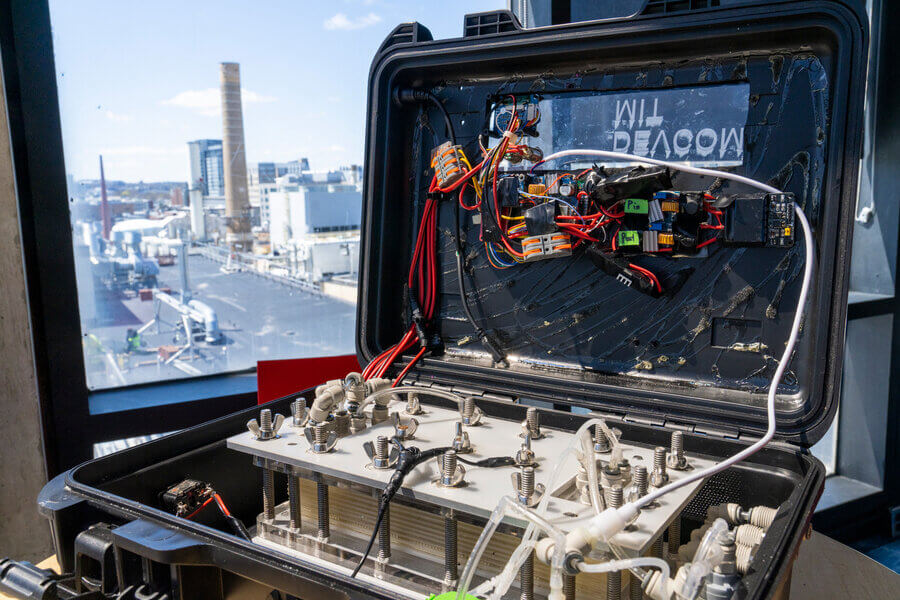The development is a combination of a technique called ion concentration polarization (ICP) and electrodialysis. The optimal installation involves a two-stage ICP process, with
In the ICP process, the water channel is located betweenmembranes that repel positively or negatively charged particles, including salt molecules, bacteria and viruses, as they pass by. This step removes both dissolved and suspended solids.
But ICP does not always remove all the salts floating in the middle of the channel. So the researchers implemented a second process, known as electrodialysis, to remove the remaining salt ions.
Scientists place ICP and electrodialysis modules insidea portable device with just one button to start the process of automatic desalination and cleaning. As soon as the salinity and particle count fall below certain thresholds, the device notifies the user that the water is safe to drink.
 Desalination plant
Desalination plant
The researchers also created an app fora smartphone that can control the device wirelessly and report energy consumption and water salinity in real time.
The created device will allow to receive freshwater in remote areas with extremely limited resources, such as communities on small islands or on board seagoing cargo ships. It could also be used to help refugees fleeing natural disasters or soldiers.
A desalination plant is a set of devices for reducing the concentration of salts in sea (ground) water to the extent of its suitability for drinking, household and technical needs.
Read more
It has been hunted for centuries: what do we know about the planet Vulcan next to the Sun
Astronomers have found a planet near the Earth: it has a very strange orbit
Inexplicable duality found in elementary particle physics: what will it lead to